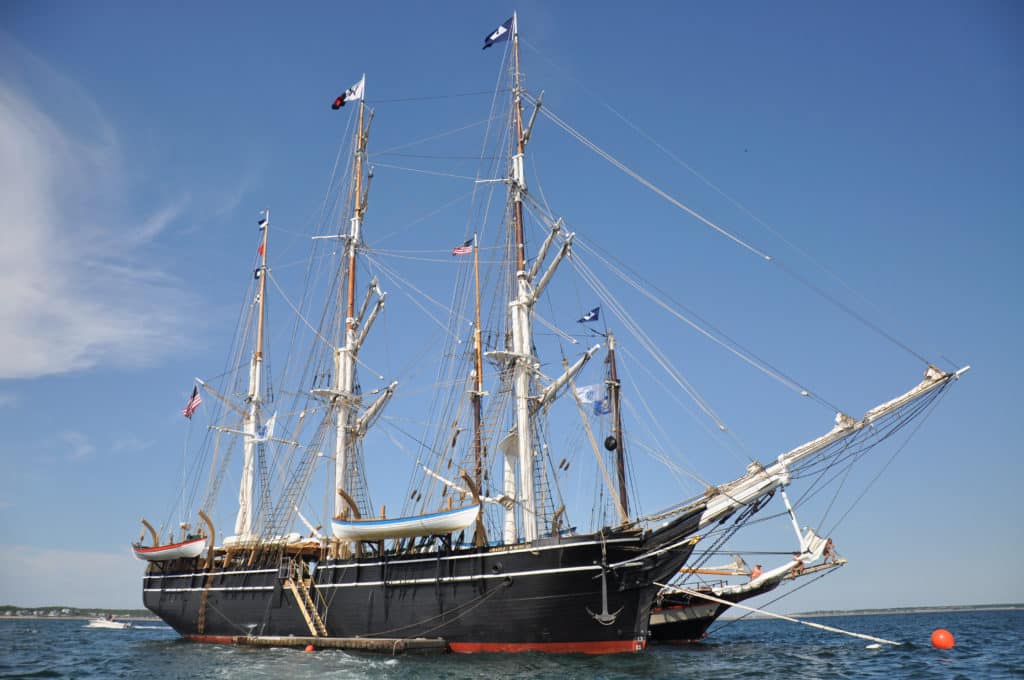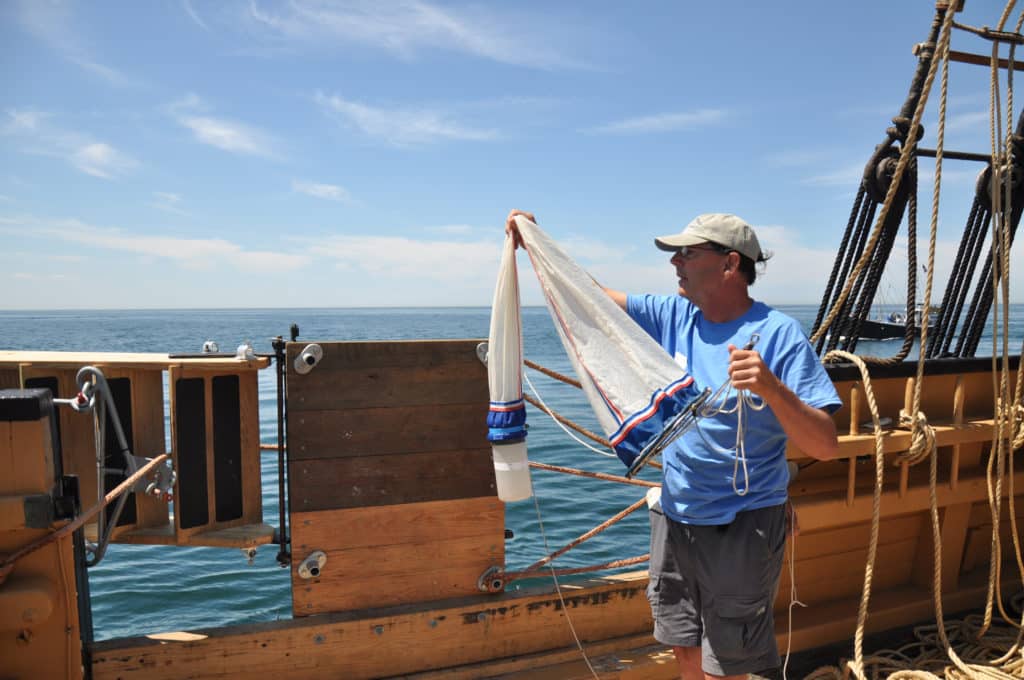“Free and clear,” called out Capt. Kip Files as the tugboat peeled off to port, leaving the engineless Charles W. Morgan, sails aloft, plying the waters of Stellwagen Bank off Cape Cod in near silence. It was the 38th voyage of the 113-foot square-rigged barque. Built in 1841, Morgan is the last wooden whaling ship in the United States and has been the focus of a remarkable six-year restoration by Mystic Seaport in Connecticut. Now the ship was undertaking a historic voyage after nearly a century of sitting dockside.
The silence was soon broken by the exhales and splashes of breaching humpback whales, along with the wondrous exclamations of the 60 people on board, including crew, Seaport staff, donors and scientists.
Leaning over wooden bulwarks, surrounded by thick lines woven from manila hemp and flax, Dave Grant of the American Littoral Society collected water samples full of phytoplankton and zooplankton, as well as some unidentified inorganics, perhaps paint or, vexingly, microplastics. Ben Cowie-Haskell deployed drogues and Irina surface drifters for the Northeast Fisheries Science Center to study current movements. Leila Hatch, a marine ecologist with the National Oceanic and Atmospheric Administration who studies the bioacoustics of right whales, was broadcast via the national Web-based channel OceansLIVE, discussing the audio frequencies of whale calls. Hatch’s research has revealed that the acoustic pollution from ships in the century since Morgan retired impairs right whales’ ability to communicate by 70 percent.
Charles W. Morgan recalls a long-gone era of whaling but it also evokes a quieter time — without planes or motorized watercraft — that every sailor knows intimately. The moratorium on commercial whaling may have been implemented in 1982, but commercial ocean traffic is increasing. “There’s a 3-decibel increase every 10 years since the 1950s,” Hatch said. Indeed, the harpoons may be stowed, but human impact on sea life continues.
Follow Morgan to Stellwagen Bank National Marine Sanctuary through OceansLIVE.










